Inside Microsoft's Surface RT Tablet
by Anand Lal Shimpi on October 16, 2012 11:00 AM ESTAlong with the first pricing and availability details, Microsoft gave us some additional insight into Surface in a tour of the design and engineering facility where the project was first hatched.
Microsoft wasn’t specific about when work began on Surface other than to say that the company was thinking about what it needed to do to bring Windows 8 to market around the time Windows 7 was completed in the summer of 2009. The decision was made early on to bring a first party device to market that would be an extension of Windows 8. It was from that concept that Surface first emerged.
The design group that eventually created Surface started with the most simple of inspirations: a Moleskine notebook. Although Surface and its Type/Touch Covers make ample use of magnets (both for the kickstand and connecting the covers to the tablet), you’ll notice that there are no magnets holding the non-hinged side of the cover in place. According to Microsoft, it wanted to deliver a true book-like feel and the added resistance of having to overpower a magnet to open the cover of your tablet ruined that goal.
In the creation of Surface Microsoft was laser focused on eliminating so called scary interactions. Every physical interaction with Surface needed to be confident and consistent. From the kickstand to the interface between the covers and the tablet, Microsoft wanted everything to feel very solid. What Microsoft hoped would set Surface apart is its ability to quickly and confidently transform between multiple operating modes (tablet, notebook, standing display, covered display). In pursuit of that goal it put tremendous focus on build quality and materials choices. We’ve seen a resurgence in focus on build quality in recent years, but that’s typically simply to improve device feel - with Surface, having excellent build quality was needed to enable functionality. Users wouldn’t be likely to switch between various usage modes with the Touch Cover if doing so felt like you were going to break the device.
Microsoft’s efforts to guarantee a solid and consistent physical experience with Surface started on the manufacturing side but extended all the way through long term testing. The kick stand should always operate with the same feel and noise for the life of the device, the same is true for the covers.
Microsoft claims it invested heavily in the VaporMg (vapor-mag) injection moulded magnesium process that it uses to create Surface’s chassis. The end result is a unique combination of strength, weight and surface feel. Despite the relatively common sounding name, Surface doesn’t feel like any other portable device as a result of Microsoft’ VaporMg.
Design Evolution
10.6-inch Surface RT final (left) vs. 10.1-inch Surface RT concept (right)
When Surface launched, we commented on the relatively unusual 10.6-inch diagonal display size. Microsoft told us that it originally targeted 10.1-inches for Surface however it resulted in a considerably more cramped multitasking experience, as well as the impact on the Touch Cover keyboard side drove the need for a larger display. Microsoft also considered going with an 11-inch display but eventually settled on 10.6-inches as the perfect balance of productivity and portability.
Microsoft iterated through hundreds of designs, making heavy use of in house polyjet 3D printers to rapidly prototype concepts. Features like determining the position of the sole USB port on Surface benefitted from the 3D printers. Microsoft is particularly proud of Surface’s USB port and is quick to point out that it’s a custom port, color matched to the rest of the chassis and with the same angle as the rest of the chamfer.
Just as important as the Surface tablet itself was the creation of the Touch and Type Cover designs. Microsoft was similarly focused on prototyping and arriving at the perfect cover. Unlike at the Surface launch event, Microsoft did allow us to type on the Touch Cover although I’ll refrain from coming to any conclusions about the keyboards after only a few minutes of use.
Beneath the Surface
Microsoft gave us a look into a teardown of the Surface tablet. Very focused on WiFi reception Microsoft included two antennas connected to a Marvell 2x2:2 WiFi solution (88W8797?). The antennas are routed to the left and right of the front facing camera and are behind RF windows on both sides of the tablet to ensure RF passes through as unimpeded as possible.
The Tegra 3 SoC appears to be paired up with two off-package DRAM devices. I couldn’t get a good look at the rest of the components in the design although I did see a few Atmel chips (touch controllers perhaps?).
Surface’s ClearType HD Display
Although Surface RT only ships with a 1366 x 768 panel, Microsoft was quick to point out that there’s more to display quality than pure resolution. Surface’s 10.6-inch panel features an optically bonded LCD and cover glass stack, similar to what we’ve seen in most modern, high-end smartphones. Optical bonding is expensive to do and not as common in large tablet panels, but Microsoft believes it can do so at reasonable yields on Surface.
The optically bonded cover glass + LCD stack reduces internal reflections, thus reducing glare and increasing light transmission.
One clever trick is that Microsoft, through various coatings, index matches between the touch sensor’s ITO (Indium Tin Oxide) array and the cover glass, once again in pursuit of fewer reflections.
Microsoft claims it’s also very focused on delivering a well calibrated panel with Surface, although we’ll have to wait and put those claims to the test ourselves.
Final Words
Most of what we’ve heard about how Surface isn’t unusual, after all it’s what you’d expect from a great device company. That in itself is the big takeaway however -Microsoft has transformed itself into a focused device maker and not just a software company.
Surface RT will be available on October 26th starting at $499 for the 32GB model with Office 2013 Home & Student edition. Once devices are available we’ll be sure to follow up with a full review.


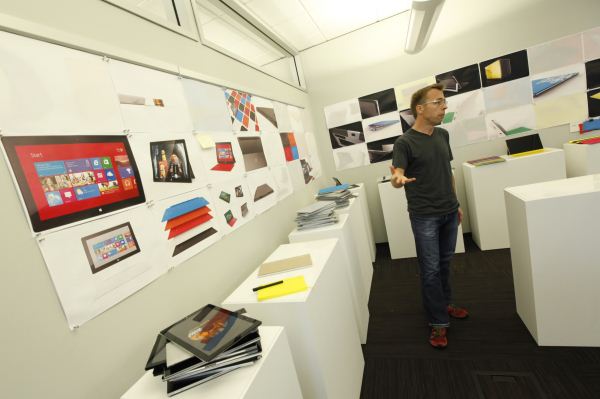

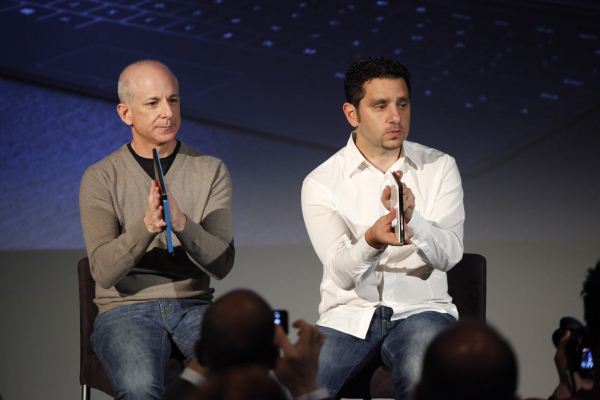
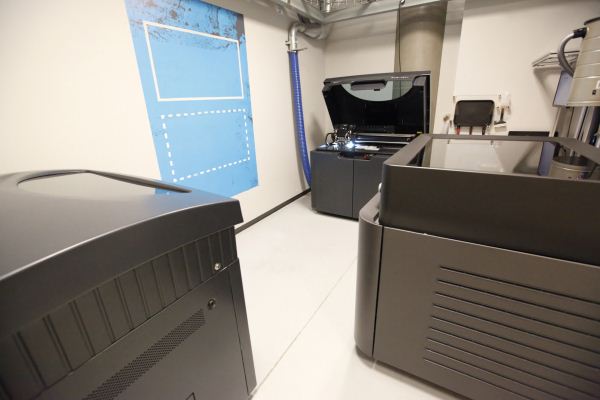
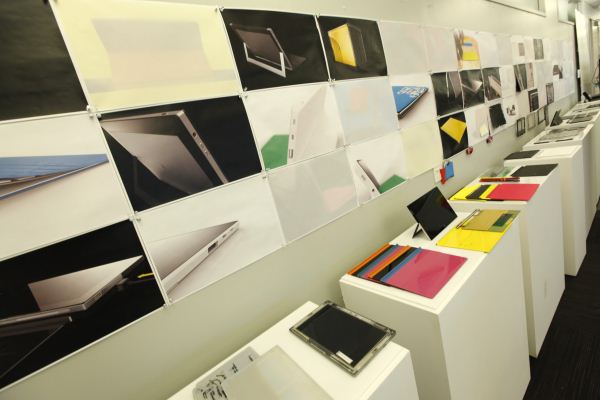
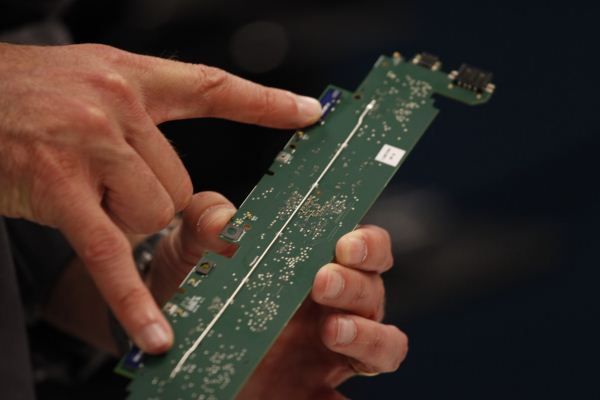






















73 Comments
View All Comments
musicus - Wednesday, October 17, 2012 - link
Lol, that was a good one!lilmoe - Tuesday, October 16, 2012 - link
That's a ridiculous argument.Samsung is getting away with similar pricing on so-called "cheap plastic" with their Galaxy S series. If the Galaxy S4 comes with "premium" materials, Samsung could arguably get away with higher pricing than the iPhone.
It's not about "being Apple". It's about building a fast, good, efficient, and reliable product with an acceptable ecosystem and great customer support. That's the key to success in this time and age.
Surface is on its way to being a success in the tablet world IMHO. Yes, even with that "pricing". You simply get "more" with the same price compared with an iPad, especially when the ecosystem catches up.
steven75 - Tuesday, October 16, 2012 - link
The software ecosystem is everything. Ballmer said it himself in his famous sweaty developers, developers, developers rant.Surface RT with it's sub 4,000 apps is up against the iPad with it's 250,000 apps.
No doubt out it, you get significantly more with the iPad, especially with the iPad 2 (and soon iPad mini) undercutting the Surface on price. Let's not kid ourselves, this thing has an iPad 2 class display at best.
damianrobertjones - Tuesday, October 16, 2012 - link
There's always MS Office.Also out of those 250,000 apps which, if any, has any real use? (I'm sure that there's a few)
name99 - Tuesday, October 16, 2012 - link
What REAL WORLD problem are you solving by buying a tablet with a really crappy keyboard and no mouse/trackpad (so no fine control) rather than buying a laptop?To me this is like boasting how waterproof your toaster is. It may be waterproof indeed, but I don't have any need to make toast in the pool.
kkwst2 - Wednesday, October 17, 2012 - link
You're comparing having a tablet with a (nearly) full version of Office to making toast in a pool? Wow.Are you sure you're not ReallyBadAnalogyGuy?
250,000 apps, and I can't think of a single one that is more useful than a full version of Office. The real world problem is having a tablet that I can edit a colleague's manuscript, make some last minute changes to my presentation, or crunch my latest research results on in a pinch and still have a portable form factor that I can slip in a conference bag.
Does that usage model really sound so far fetched? They may have blurred the line between notebook and tablet a little better than anyone so far in my opinion (pending actual hands on of course).
Will I get one? I'll probably wait for something like the Surface Pro because I'll want access to things like Illustrator and Acro Pro. Also, I'm betting my work won't provide VPN software for it.
Will it catch on? I think it won't totally flop, but will certainly not put a dent in iOS tablets. If anything it will cannibalize Android tablet sales.
inighthawki - Wednesday, October 17, 2012 - link
Not to mention, the keyboard has a trackpad built in, and the touch cover has actual keys with feedback if you want that, too. So OK, it doesn't come with a full-sized mechanical keyboard, but neither does any other tablet or laptop.KoolAidMan1 - Tuesday, October 16, 2012 - link
That's the point though, the more apps there are, the greater odds there are that the best developers will be on board and that the best apps will be available.You can expect a distribution on any platform where 90%-95% of software won't be worth looking at for most people. 95% of 250k is far greater than 95% of 4k.
Ammaross - Friday, October 19, 2012 - link
"You can expect a distribution on any platform where 90%-95% of software won't be worth looking at for most people. 95% of 250k is far greater than 95% of 4k."When 5000+ of those apps (not my number btw) are "fart apps," it's not hard to inflate numbers. Apple has decided to arbitrarily limit certain types of apps (fart apps, flashlight apps, etc) due to the flooded app store for those genres. They allowed it at first to be able to claim those large app count numbers, but now it's not as needed. I doubt those "4000" WinRT apps are fart apps.
musicus - Wednesday, October 17, 2012 - link
iPad >250'000 specially for iPad designed, among them many highly professional apps for hospitals, cartography for airlines, prof. music studio recording and editing etc...MS Office will be on the iPad in spring 2013.
Windows RT: 4000 Apps...
Sorry, but these are the facts. MS comes 3 years late, which is not easy to catch up, even if the hardware is fine. It's the software that makes the difference!